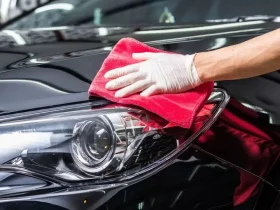I’ll be straight with you.
You’re here because you want the strongest return on your next upgrade.
And I don’t blame you.
I’ve helped a lot of truck owners dial in their setups, and I’ve seen what works, what fails, and what actually moves the needle.
I focus on one thing when I recommend gear.
Real world performance backed by clean engineering.
That’s why I’m walking you through this guide.
I picked every point based on what I’ve seen across builds, installs, and long-term ownership.
You’re about to get a clear path for choosing the right wheel setup, how to avoid the common mistakes, and why certain brands stand out.
If you follow the steps here, you’ll end up with a truck that rides better, looks sharper, and handles real weight without stress.
Let’s get into it.
Step #1: Start With the Right Fitment
You’d be surprised how many people skip this part.
They jump into styling, colors, or lip depth before confirming whether the wheels even match their chassis.
You don’t need that headache.
If you’re running a Ford platform, keep your search tight and look directly at Ford dually wheels so you stay inside the correct specs from the start.
This one move saves you time and prevents the most common fitment errors.
I’ve seen truck owners chase adapters, spacers, or hacky solutions because they bought wheels that look good but weren’t engineered for their setup.
You don’t want that.
Step #2: Stick With Direct Bolt-On Solutions
If you want long term stability, direct bolt-on is the safest path.
That means no adapters, no rear spacers, and no trying to force fit a wheel design meant for a different vehicle.
This is one of the main reasons I point truck owners toward DDC Wheels.
They engineer their wheels for true hub centric fitment across all six positions.
Front, inner, outer — everything lines up clean and tight.
No plastic parts.
No weak points.
You get aluminum center caps, billet lug covers, and stainless hardware.
That combination creates the kind of consistency that keeps a truck stable under real load.
And if you care about matching your inner and outer wheels, they build both to the same design.
A clean match makes a huge difference in the final look of the truck.
Step #3: Choose the Right Style for Your Build
Every truck has a personality.
Your wheel choice should match what you want that truck to say.
DDC has several solid options that cover the main styles people look for.
Here’s how I normally break it down:
- Aftermath
Strong, aggressive styling with a modern face. - The Mesh Forged
A detailed look without clutter. Great for lifted trucks. - The Ten Forged
Simple, sharp, and structured. Clean lines. - The Spoke Forged
A bold layout that stands out without going overboard. - The Shield
Big presence with that signature 10 lug vibe.
Each option supports different tire widths across 20, 22, and 24 inch packages.
If you’re planning a heavier build, the wider tire choices on the larger diameters can give you more grip and better stability.
Step #4: Understand Load Ratings Before You Buy
This is where a lot of wheel companies cut corners.
And it’s also why DDC has built such a strong reputation.
Their cast setups handle up to 20,000 pounds combined.
Their forged setups go up to 24,000 pounds.
Front and rear wheels each support up to 4,000 pounds.
That’s not marketing.
Those numbers matter if you tow, haul, or run commercial loads.
I always tell people to treat load rating like insurance.
You don’t think about it until you need it.
And when you need it, you need it.
Step #5: Keep Installation Simple
Here’s something I’ve learned from years of watching installs.
The cleaner the package, the cleaner the install.
DDC includes:
- Two front wheels
- Two rear outers
- Two rear inners
- Four aluminum caps
- Lug nuts and billet covers matched to the wheel pattern
No random hardware.
No chasing parts.
No mismatched caps.
You install it, and it works.
That’s how it should be.
Step #6: Choose a Brand With a Consistent Track Record
I’ve watched a lot of brands come and go.
Some start strong, then fade once people actually put miles on the wheels.
Others look great on social media but fall apart under real weight.
DDC has held their place because their engineering backs up their styling.
They build for strength, fitment, and reliability.
That’s why I recommend them when someone wants long term value instead of a temporary upgrade.
If you want a truck that feels stable, looks sharp, and stays that way, DDC is one of the safest choices you can make.










